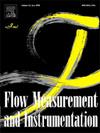Studies of electrical capacitance tomography image reconstruction based on improved CycleGAN
IF 2.7
3区 工程技术
Q2 ENGINEERING, MECHANICAL
引用次数: 0
Abstract
Electrical Capacitance Tomography (ECT) technology offers significant advantages for the real-time, non-invasive, and visual monitoring of fluids within oil pipelines. Nonetheless, the unique characteristics of the soft field environment present challenges in the ECT image reconstruction process, including issues of non-linearity, under-determinedness, and ill-posedness. These challenges result in notable limitations in conventional reconstruction techniques, such as LBP, Landweber, and Tikhonov regularization, particularly concerning the identification of flow boundaries and the accuracy of reconstructions. To mitigate these challenges, this study introduces an ECT-GAN algorithm, which is based on an enhanced CycleGAN framework, aimed at improving both the quality and robustness of ECT image reconstructions. Building upon the R6K architecture(the generator architecture of resnet_6 blocks and the initial network of Kaiming), ECT-GAN incorporates four significant advancements that further optimize its performance: The integration of Huber loss for the evaluation of model prediction accuracy contributes to an improvement in the robustness of the model while simultaneously diminishing its sensitivity to outliers during the reconstruction process; The Vision Permutator (VIP) attention mechanism enhances the representation of target regions by capturing long-range dependencies along a single spatial dimension while preserving positional information along the other, thereby ensuring better retention of structural details in ECT images, improving flow boundary clarity, and reducing artifacts; The FusedConv convolution module, which optimizes computational efficiency by integrating batch normalization within convolution layers, reducing parameters and inference costs, and the adoption of a Receptive Field Block (RFB) with spatial pyramid pooling to expand the receptive field, thereby improving the capture of multi-scale contextual information. To validate the effectiveness of ECT-GAN, a simulation model was developed using COMSOL Multiphysics, followed by extensive experiments conducted under various flow conditions in both the simulation model and a static experimental system. These experiments aimed to evaluate the algorithm's ability to reconstruct ECT images accurately across different flow regimes, ensuring its reliability in real-world applications. The results confirm that ECT-GAN outperforms conventional methods in ECT image reconstruction, effectively addressing the challenges of underdetermination and nonlinearity in the reconstruction process, demonstrating enhanced imaging accuracy, robustness, and generalization capability in practical ECT systems.
基于改进CycleGAN的电容层析成像图像重建研究
电容层析成像(ECT)技术为石油管道内流体的实时、无创和可视化监测提供了显著的优势。然而,软场环境的独特特征给ECT图像重建过程带来了挑战,包括非线性、不确定性和不适定性问题。这些挑战导致了传统重建技术(如LBP、Landweber和Tikhonov正则化)的显著局限性,特别是在流边界的识别和重建的准确性方面。为了缓解这些挑战,本研究引入了一种基于增强型CycleGAN框架的ECT- gan算法,旨在提高ECT图像重建的质量和鲁棒性。基于R6K架构(resnet_6块的生成器架构和Kaiming的初始网络),ECT-GAN结合了四个显著的进步,进一步优化了其性能:用于评估模型预测精度的Huber损失的集成有助于提高模型的鲁棒性,同时降低了重建过程中对异常值的敏感性;视觉置换(VIP)注意机制通过捕获沿单个空间维度的远程依赖关系来增强目标区域的表示,同时保留沿另一个空间维度的位置信息,从而确保更好地保留ECT图像中的结构细节,提高流边界清晰度,并减少伪影;FusedConv卷积模块,通过在卷积层内集成批量归一化来优化计算效率,减少参数和推理成本,并采用带有空间金字塔池的接受域块(RFB)来扩展接受域,从而提高多尺度上下文信息的捕获。为了验证ECT-GAN的有效性,使用COMSOL Multiphysics建立了仿真模型,然后在仿真模型和静态实验系统中进行了各种流动条件下的大量实验。这些实验旨在评估该算法在不同流态下准确重建ECT图像的能力,确保其在实际应用中的可靠性。结果证实,ECT- gan在ECT图像重建方面优于传统方法,有效解决了重建过程中的不确定和非线性问题,在实际ECT系统中展示了更高的成像精度、鲁棒性和泛化能力。
本文章由计算机程序翻译,如有差异,请以英文原文为准。
求助全文
约1分钟内获得全文
求助全文
来源期刊

Flow Measurement and Instrumentation
工程技术-工程:机械
CiteScore
4.30
自引率
13.60%
发文量
123
审稿时长
6 months
期刊介绍:
Flow Measurement and Instrumentation is dedicated to disseminating the latest research results on all aspects of flow measurement, in both closed conduits and open channels. The design of flow measurement systems involves a wide variety of multidisciplinary activities including modelling the flow sensor, the fluid flow and the sensor/fluid interactions through the use of computation techniques; the development of advanced transducer systems and their associated signal processing and the laboratory and field assessment of the overall system under ideal and disturbed conditions.
FMI is the essential forum for critical information exchange, and contributions are particularly encouraged in the following areas of interest:
Modelling: the application of mathematical and computational modelling to the interaction of fluid dynamics with flowmeters, including flowmeter behaviour, improved flowmeter design and installation problems. Application of CAD/CAE techniques to flowmeter modelling are eligible.
Design and development: the detailed design of the flowmeter head and/or signal processing aspects of novel flowmeters. Emphasis is given to papers identifying new sensor configurations, multisensor flow measurement systems, non-intrusive flow metering techniques and the application of microelectronic techniques in smart or intelligent systems.
Calibration techniques: including descriptions of new or existing calibration facilities and techniques, calibration data from different flowmeter types, and calibration intercomparison data from different laboratories.
Installation effect data: dealing with the effects of non-ideal flow conditions on flowmeters. Papers combining a theoretical understanding of flowmeter behaviour with experimental work are particularly welcome.
 求助内容:
求助内容: 应助结果提醒方式:
应助结果提醒方式:


